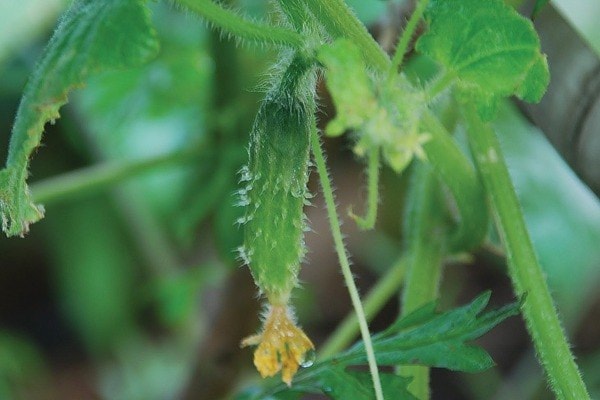Can you imagine a salad without cucumbers?
Don’t you love a cool crisp cucumber sandwich on a hot day, or fresh cucumbers in vinegar?
And what would a grilled cheese sandwich or hamburger be without pickles?
Well, cucumbers are just about the most popular vegetable in the home garden (remember, tomatoes are a fruit).
Cucumbers have been around for awhile, too. They have been cultivated both in India and China for about 3,000 years.
Christopher Columbus is generally given credit for introducing them to North America. Thank you.
Now, of course, there is some dispute as to whether he actually made it here, but we are, nonetheless, fortunate to have these wonderful vegetables, and now is the time they should be planted.
I know this because all the folks who did not listen to me earlier are now coming in to garden shops to replace their first and second crops which have already died of cold and disease.
Cucumbers are warm weather plants and should only be set out when the weather warms up and stays warm.
Cold, wet ground is no place for cucumbers, and that’s why now is a great time to plant. For best results, they should be planted in hills or raised beds with excellent drainage.
I always dig plenty of manure down deep, about 30 centimetres below the ground, to give those roots some place to go that is damp and rich in humus when the weather gets hot. Bitter-free cucumbers can only be grown if the plants have access to moisture, especially during the fruit-bearing cycle.
If you seed cucumbers, they seem to take off very quickly once the weather warms up, but transplants need a little more care. Greenhouse-grown transplants need at least four to five days of acclimatization before they can be set out in the ground, and even then they need some protection from the elements. Incidentally, be very careful not to disturb the rootball of young plants because the roots are extremely tender, and the plants will suffer a severe set back if the roots are damaged.
There are many fine cucumber varieties available today that display good disease tolerance. But to be on the safe side, keep that cucumber patch moving to a different location in your garden each year. Wet spells in the summer, or watering too frequently overhead often cause ‘alternaria leaf spot’ or mildew. As with any disease prevention program, healthy, well-fertilized plants are less susceptible to these problems, but keeping that foliage dry is really important. Copper is an effective fungicide for controlling this problem, but you must act quickly if the disease appears.
Now, as to varieties, the list seems to grow each year. Many experienced gardeners like the old-fashioned ‘National Pickling’ and ‘Straight 8’ varieties. If you have been having success with these older strains, then stay with them, but there is a wealth of newer varieties on the market and each has its own unique characteristics.
When it comes to slicing cucumbers, it is burpless all the way. If you like the long English types, but don’t have a greenhouse handy to keep out those pesky bees who want to pollinate the self-pollinating varieties, then try either the ‘Japanese Burpless’ or the shorter and sweeter yet American burpless, ‘Sweet Slice’. The great feature of burpless cucumbers is the fact that you can eat the skin without fear of an upset tummy, and every fruit is bitter free.
Instead of growing these varieties on the ground, take some garden trellis and make an A-frame shape so the plants can grow up one side and down the other. It makes a delightful garden feature, and it is one sure way to keep the slugs away from your cucumbers. If you have limited space, you can grow ‘Fanfare’ in containers, but be sure to use at least a 36-cm tub and mix plenty of sterilized compost in with the potting soil before you plant. I have yet to find a bitter cucumber from these varieties.
If you would really like something different, try ‘Lemon Cucumbers’, which grow the size, shape and colour of lemons, but still taste like crispy, juicy cucumbers.
Cucumbers are fun, fast and easy to grow as long as we get a little cooperation from the weather. Remember: use raised beds and black plastic or trellis frames, try some of the new varieties and keep the roots moist during the hottest part of summer. Once planted, you will be enjoying that first cucumber sandwich in about 40 to 50 days.
Brian Minter owns and operates Minter Gardens just outside of Chilliwack.
